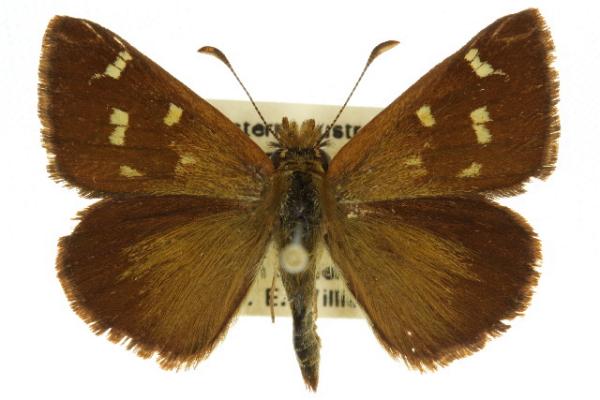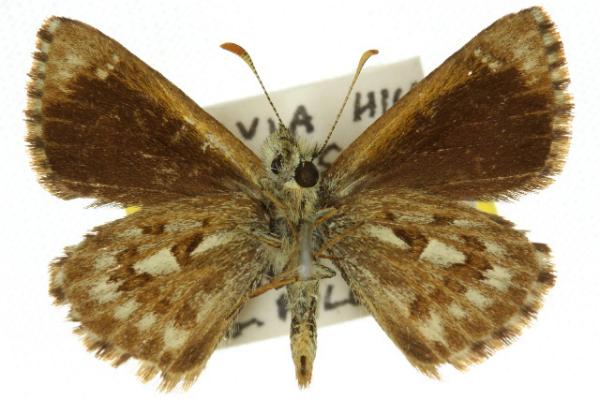
(Photo: courtesy of CSIRO/BIO Photography Group,
Centre for Biodiversity Genomics,
University of Guelph)
These Caterpillars are pinkish brown with a
dark brown head.
They feed on various grasses (
POACEAE ) including :
Meadow Rice Grass ( Microlaena stipoides ),
Perennial Veldt Grass ( Ehrharta calycina ), and
Annual Veldt Grass ( Ehrharta longiflora ).

underside
(Photo: courtesy of CSIRO/BIO Photography Group,
Centre for Biodiversity Genomics,
University of Guelph)
The adult butterfly is dark brown
with three or four sets of pale yellow spots on each forewing.
Underneath, they are pale brown
with a large triangular dark patch under each forewing,
and a series of rusty brown spots under each hindwing.
The wing span is about 3 cms.
The females lay their eggs in the dry season
on potential foodplants, but the eggs do not appear to
hatch until they have been sprayed with water
(with the onset of the spring rain,
and the consequent regrowth of the grass).
The species is found in
Western Australia.
Further reading :
Michael F. Braby,
Butterflies of Australia,
CSIRO Publishing, Melbourne 2000, vol. 1, p 114.
Edward Meyrick & Oswald B. Lower,
Revision of the Australian Hesperiadae,
Transactions of the Royal Society of South Australia,
Volume 26, Part 2 (1902), pp. 92-93, No. 47.
(updated 17 August 2001, 27 September 2024)







